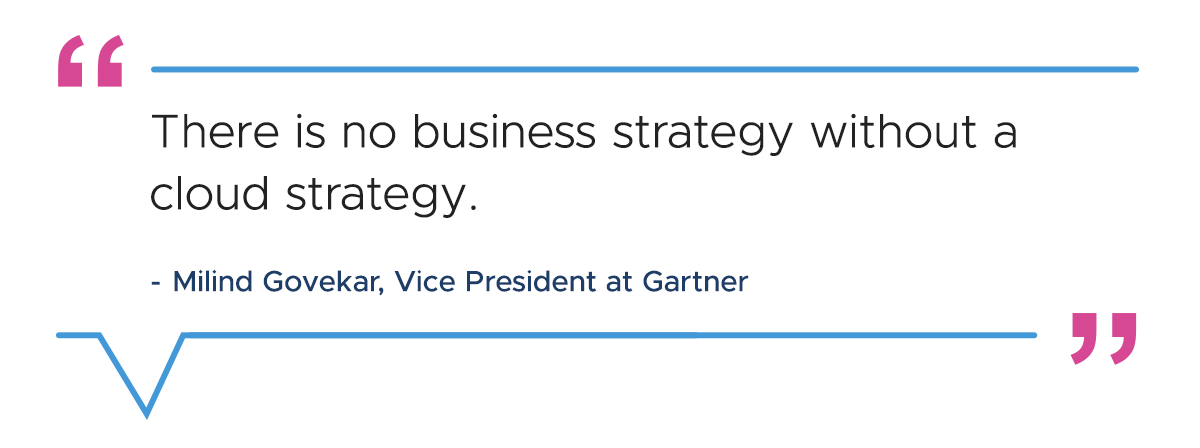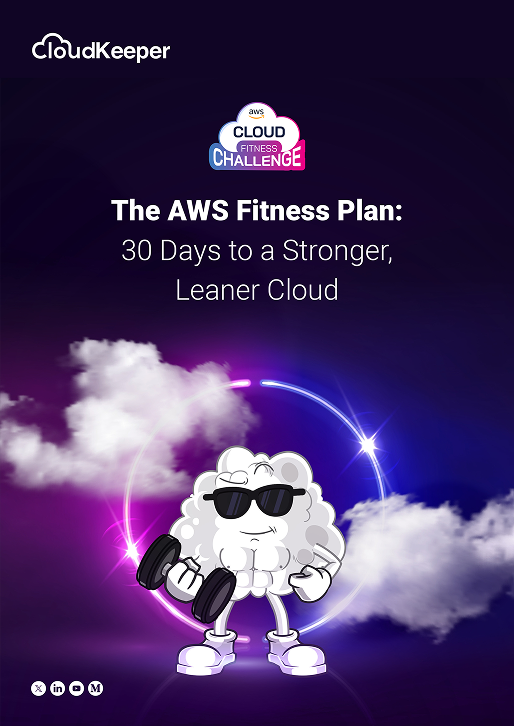Whenever we hear the word “Instant Savings” or “Instant Success”, our mind gets triggered with a sense of excitement. But as the saying goes, all great things take time, instant wins can give us temporary results but they might not be sustainable in the long run.
In cloud computing, cloud cost optimization is a critical component of maintaining profitability in business. The rising cloud cost can have a great impact on your gross margin and bottom line. Therefore, to achieve sustained success we need to move from the mindset of “quick fixes" to "building lasting value" in cloud cost optimization.
And interestingly, we are already moving towards a paradigm shift in the cloud cost optimization approach.
The research suggests that businesses are shifting their focus towards sustained cost efficiencies.
A survey by the Everest Group highlighted that “The growing maturity of cloud adoption has shifted the focus from immediate cloud cost savings to sustained cloud cost optimization through a structured methodology for continuous monitoring, analysis, and adjustment of cloud costs, ensuring long-term efficiency."
The Limitations of Instant Savings In Cloud Cost Optimization
While the strategies for instant savings might be beneficial in certain scenarios, the instant cloud cost savings approach has limitations such as:
Short-Term Focus: The immediate cloud cost savings strategies prioritize short-term gains without considering long-term implications. They majorly focus on a reactive approach rather than a proactive approach.
For example for occasional use, the pay-as-you-go model might seem to be a good choice for short-term cloud cost reduction. This may prove to be a costly decision over the long run in terms of cloud cost optimization.
Lack of Scalability: The immediate cloud cost savings strategies might not be helpful in scaling your business efficiently to accommodate future growth.
For example: Avoiding scalability needs and implementing temporary solutions to mitigate high traffic volume during peak periods of business can lead to performance degradation and service outages. Also, reducing instance sizes to save cost may result in bad performance over time hampering user experience.
Missed Opportunities: The constant focus on instant cloud cost savings opportunities may make you miss bigger wins. For example, if you solely focus on reducing server costs, you might tend to overlook opportunities to optimize the data storage cost.
Moreover, the mindset of immediate cloud cost savings restricts you from investing in new technologies, tools, and services such as AWS Reserved Instance Management Platform for automatic and dynamic scaling instances.
The immediate cloud cost saving is more focused on cloud cost reduction. However, your business needs a sustained cloud cost optimization strategy that goes beyond mere simple cost reduction.

Why is a Sustained Cloud Cost Optimization Approach Crucial for Long-Term Cost Efficiency?
Continuous Cloud Cost Optimization: Long-term cloud cost savings practices involve continuous cloud cost monitoring, analysis, and adjustment, ensuring ongoing efficiency and control over performance.
Adaptability to Change: This sustained approach enables businesses to respond to evolving requirements and optimize resource allocation accordingly.
Cultivating Accountability: It fosters a culture of accountability and transparency in cloud spending decisions.
Maximizing Returns: By prioritizing long-term value, businesses can achieve greater cost efficiency and maximize returns on cloud investments.
Strategic-Decision Making: Unlike immediate cloud cost savings a sustained approach encourages a data-driven mindset to make decisions. This strategic decision-making fosters continuous improvement and cost control over the long term.
Future-Proofing: Businesses are constantly evolving, and cloud needs will inevitably change. The long-term cloud cost optimization approach focuses on building a flexible and adaptable framework. This allows you to adjust your strategy as your requirements evolve, ensuring your cloud environment remains cost-effective in the long run.
Cloud FinOps: A way to adopt sustained cloud cost optimization approach
We have heard this multiple times now that we need to optimize the cloud infrastructure to get the maximum value from cloud investment. However, as your business grows the complexity of your infrastructure also grows. Thus, to derive maximum value from your cloud expenditure, a comprehensive approach is necessary which involves not only just optimizing your infrastructure, but your entire cloud strategy and the operational culture.

Cloud FinOps plays a critical role in helping us here. In the following section, we will explore the steps towards sustained cloud cost optimization.
1. Cost Awareness and Culture
- Establishing a strong FinOps Culture
Establishing a strong FinOps Culture sets a foundation for sustainable cloud cost optimization.
“FinOps is an evolving cross-functional management discipline with a set of methodologies that enables organizations to get maximum business value by bringing together people, processes, and tools to manage and optimize cloud costs across a business. ”
The FinOps market is valued at $5.5 billion and is projected to grow at a robust 34.8% CAGR from 2023-2025. Moreover, 63% of global organizations allocate more than 7% of their total cloud spend to FinOps.
It is evident from these statistics that enterprises consider cloud FinOps to be crucial in cloud cost reduction and optimizing cloud spending across all departments and teams.
Let's see how your business transforms after establishing a FinOps culture:
- Collaboration: The core essence of FinOps

The success of cloud cost optimization heavily relies on collaboration between different teams and departments within an organization. In FinOps, cross-functional teams including finance, technology, product, and business teams work together to prioritize innovation and efficiency with cloud resources.
This helps in breaking down departmental silos, getting a unified view, and focusing on shared FinOps goals, Finops best practices, FinOps KPIs, and objectives.
- A centralized team for FinOps
The basic idea of FinOps is simple: everyone works together to manage cloud spending. While members of the centralized FinOps team collaborate to accomplish cloud cost optimization goals, individual teams are equally accountable for their role in adhering to established standards and practices. The centralized team defines the FinOps best practices, while individual teams monitor their usage and participate in shared accountability.
- Ownership and Accountability
In FinOps, the accountability of cloud usage and cloud cost is more than just a task. It's about understanding and being responsible for your actions in the cloud and how it impacts the financial performance of the business.
FinOps Principles suggest decentralizing the decision-making around cost-effective architecture, resource usage, and optimization. In order to make the roles and responsibilities of everyone involved in cloud cost decisions and accountability clear, the "Responsibility Assignment Matrix" (RACI matrix) can be used.
- Real-time data access
FinOps relies on real-time data to make proactive decisions about cloud spending. The faster you can access, understand, and act on this information, the more efficient and cost-effective your cloud operation becomes.
Dashboards: Real-time cloud cost visibility allows everyone to see how much is being spent and take action quickly if needed. For example, a sudden traffic spike might indicate a security breach, allowing for immediate intervention.
Alerts: Automatic notifications highlight unusual spending patterns or potential cloud cost savings opportunities, enabling timely action.
- Decision Making-based on Business Value
The well-known Iron Triangle model, representing quality, speed, and cost, highlights the balancing act businesses face. FinOps as a part of your cloud cost optimization strategy helps you adopt a balanced approach instead of only a cost-focused approach.
Let us understand it by a simple example. A product team adds a new cloud service for better performance of the solution, but this eventually ends up costing a lot to the business, making it an ineffective decision.
However, if we imagine the same scenario in a company that has a collaborative FinOps culture, an informed decision would have been made after discussions with other stakeholders that balance both performance and cost.
In order to understand the true value of your cloud, clear metrics need to be defined to track progress toward cloud cost optimization goals. Also, it is important to move beyond immediate metrics and embrace a broader perspective. This includes measuring the Internal Rate of Return (IRR) of the project. Moreover, setting Cloud Unit Costs is essential to further operationalize this approach.
- Regularly assess unit costs for all cloud services and resources.
- Track unit cost changes and align them with shifts in business metrics.
- Ensure each unit cost is directly linked to specific business outcomes.
The research suggests that as the market matures, FinOps metrics are expected to evolve. Future metrics may encompass engineering costs, relevant cost data availability, business value alignment with costs, and enhanced cost visibility granularity.
2. Resource Management and Leveraging Cost Opportunities :
- Right-sizing: Regularly assess your cloud resource usage and adjust them (like virtual machines) to match actual demand. Don't overprovision – find the "just right" size for your needs.
- Automation: Automate tasks like scaling resources or shutting down idle instances to free up your team's time and optimize costs.
- Strategic Use of Pricing Models: Explore different cloud pricing options. Utilize reserved instances for predictable workloads and spot instances for flexible workloads to find the most cost-effective solutions.
3. Cloud Governance and Continuous Improvement:
- Cloud Governance: Establish clear rules and guidelines for cloud usage, cost management, and security. These policies help ensure responsible resource use and cost efficiency. Regularly review and update them to keep pace with evolving needs. Ensure your cloud architecture is in sync with the Well-Architected Framework outlined by cloud providers(AWS, Azure & Google) and conduct reviews at frequent intervals.
- Promote best practice sharing: Establish mechanisms for sharing FinOps best practices and lessons learned across teams. This fosters a culture of continuous learning and improvement.
- Invest in knowledge: Provide training sessions, workshops, and resources on FinOps principles and FinOps best practices. Equip your team with the knowledge and skills needed to make informed decisions about cloud spending and resource utilization.
Partnering up with a Cloud FinOps Partner:
Cloud FinOps requires specific expertise and skill sets in the domain. A potential and wise alternative could be partnering with a Cloud FinOps partner that can take off the whole responsibility of sustained cloud cost optimization leaving you with more time, money, and resources to dedicate to other critical areas.
As long as you leverage the cloud services, your journey of cloud cost optimization will persist. The above-mentioned strategies will act like a guiding beacon through your ongoing pursuit to ensure sustained cloud cost efficiency.
CloudKeeper would love to partner with you and make your cloud cost optimization journey more effortless. Talk to our team today!

